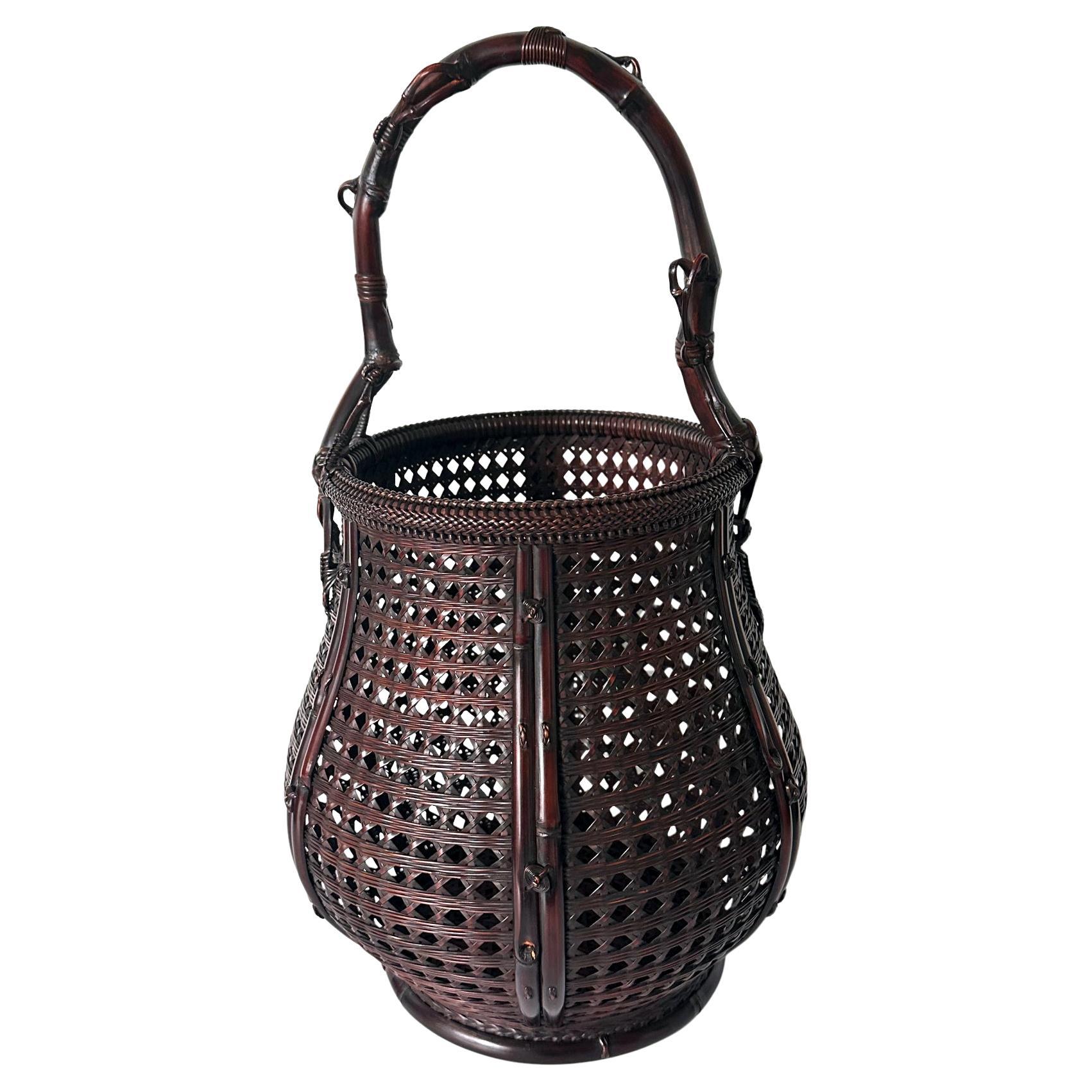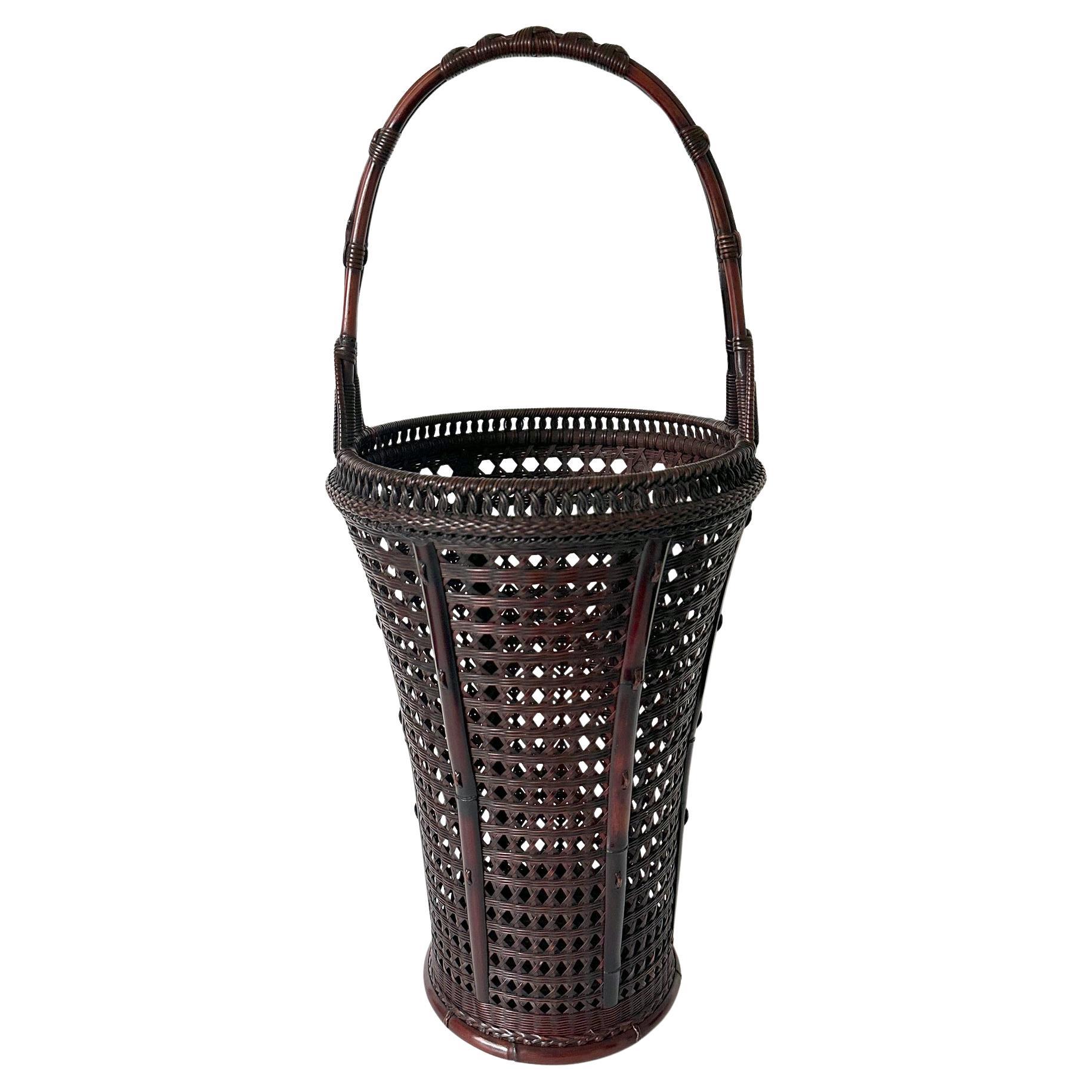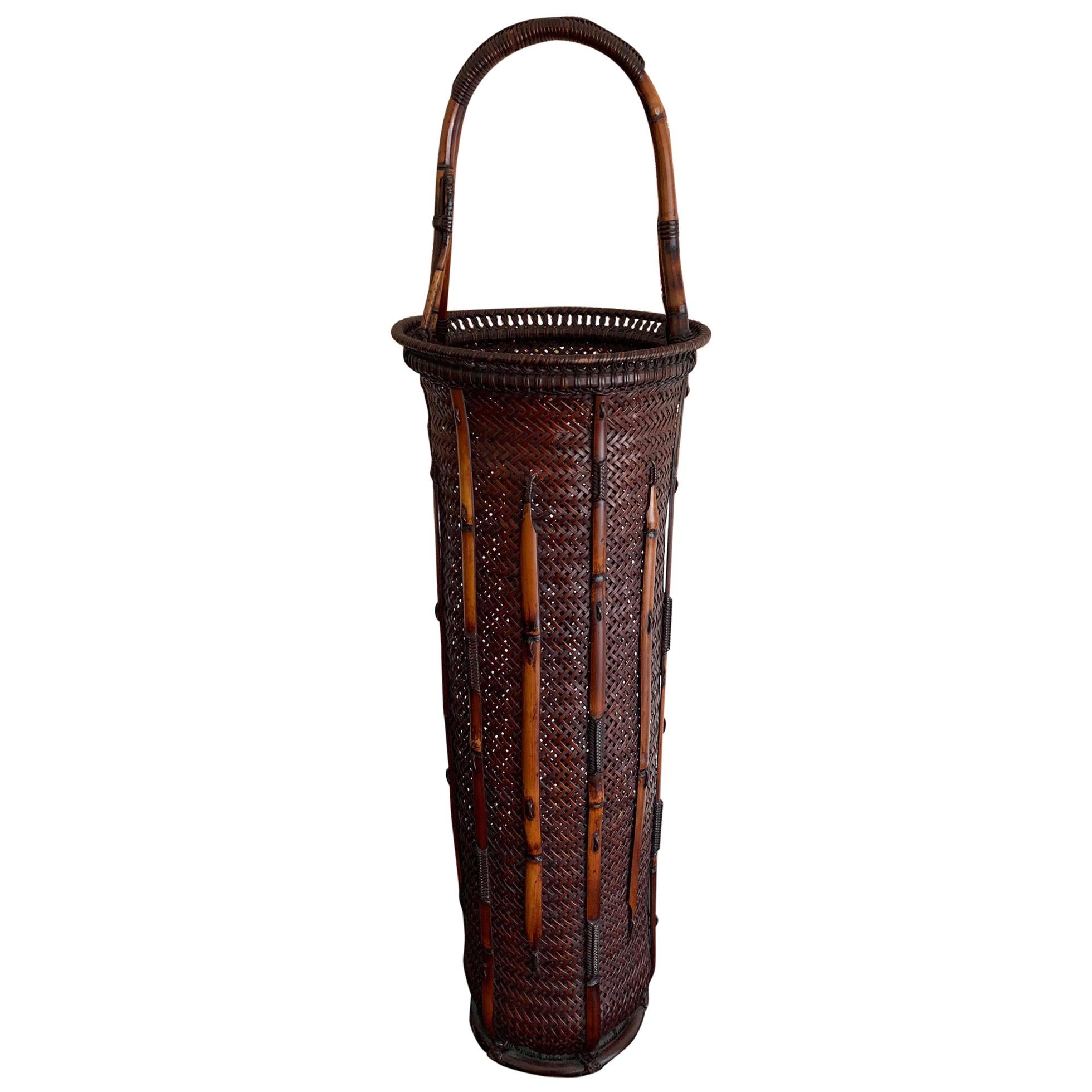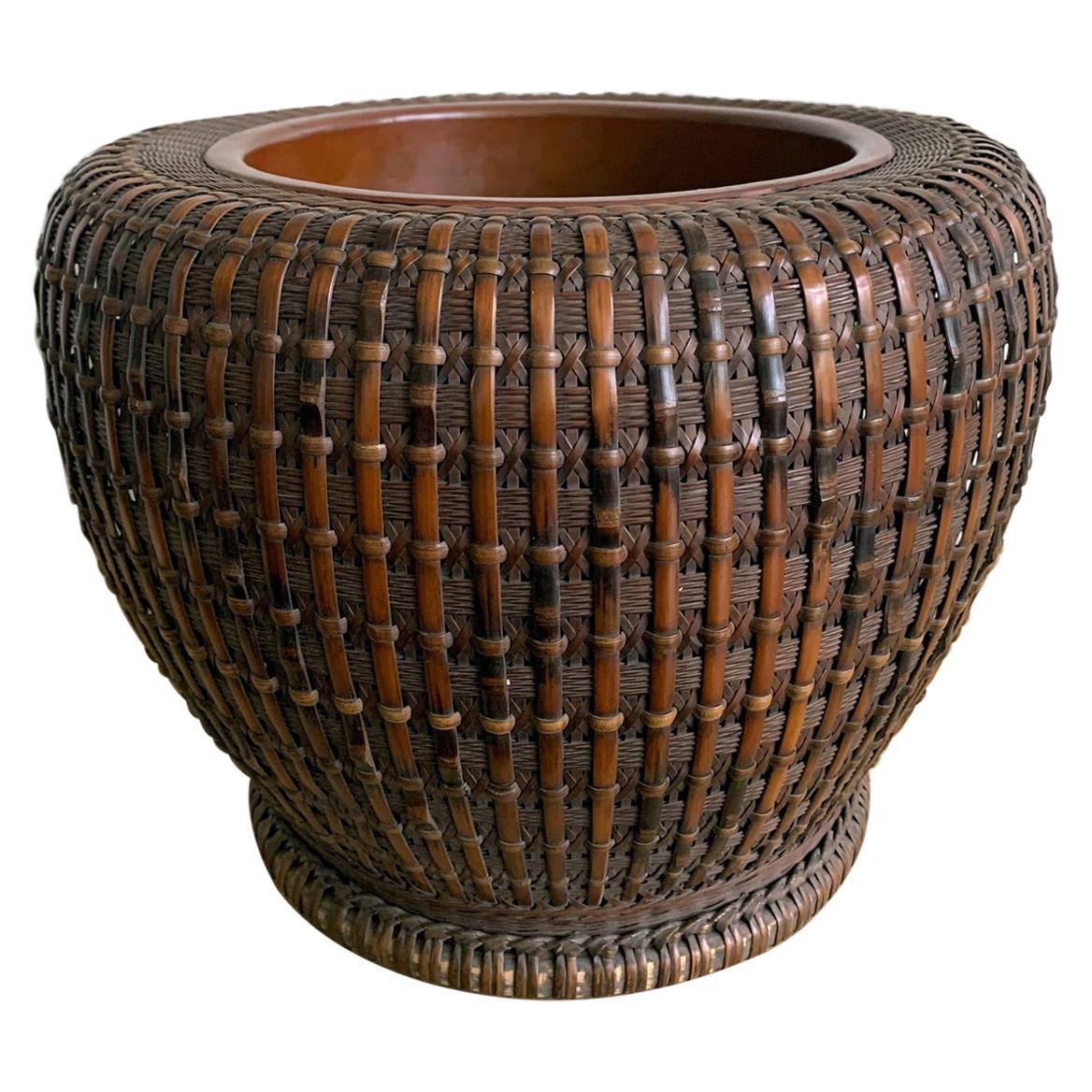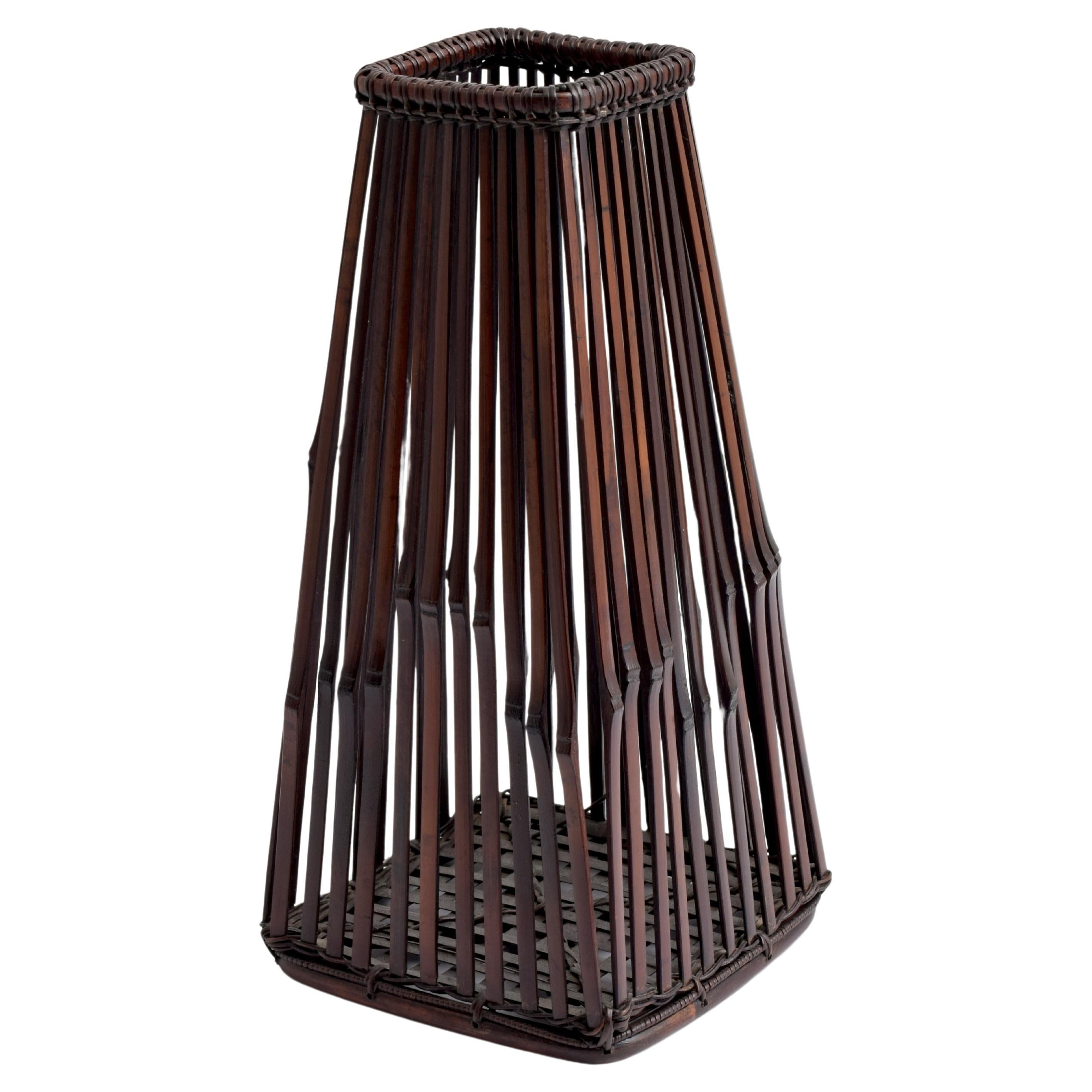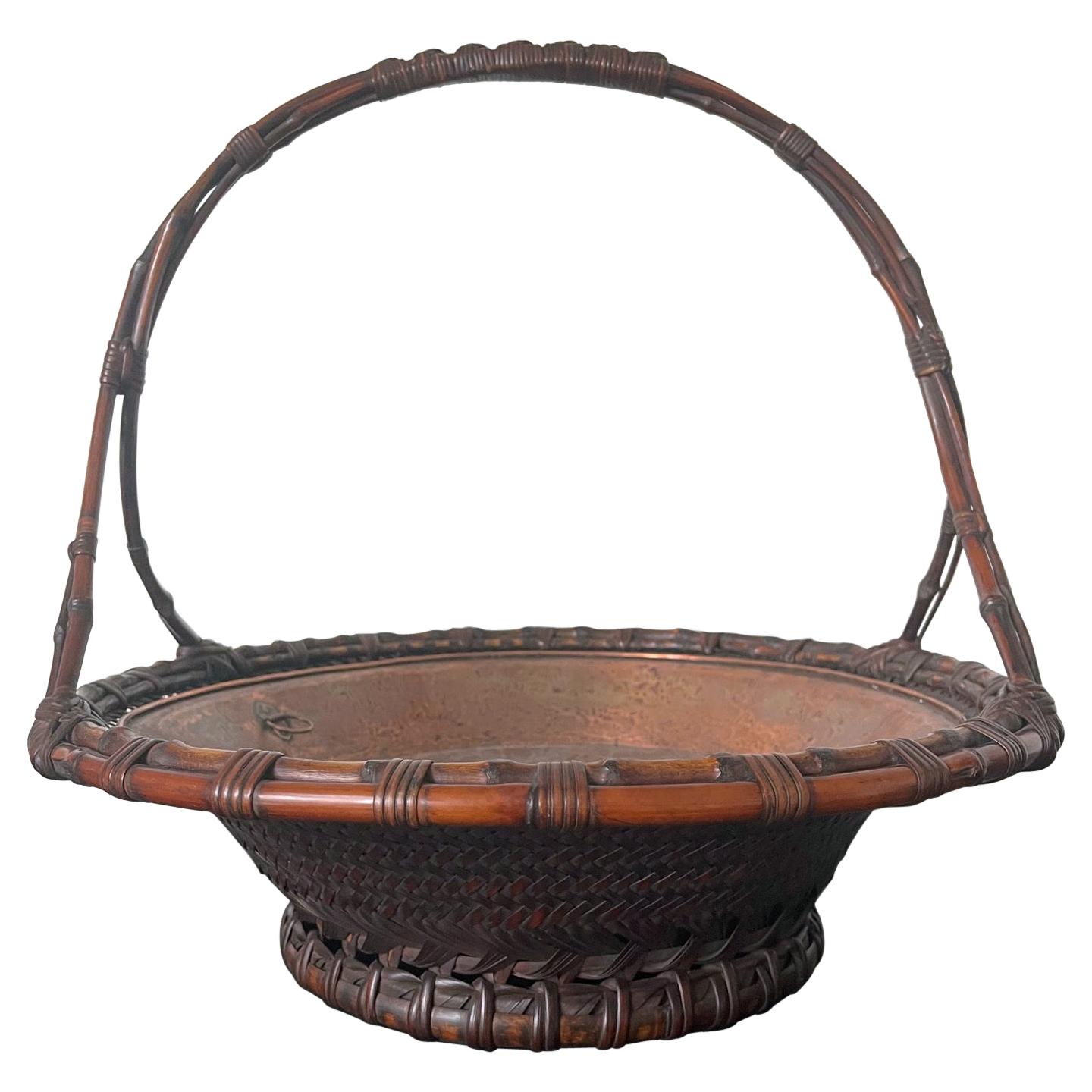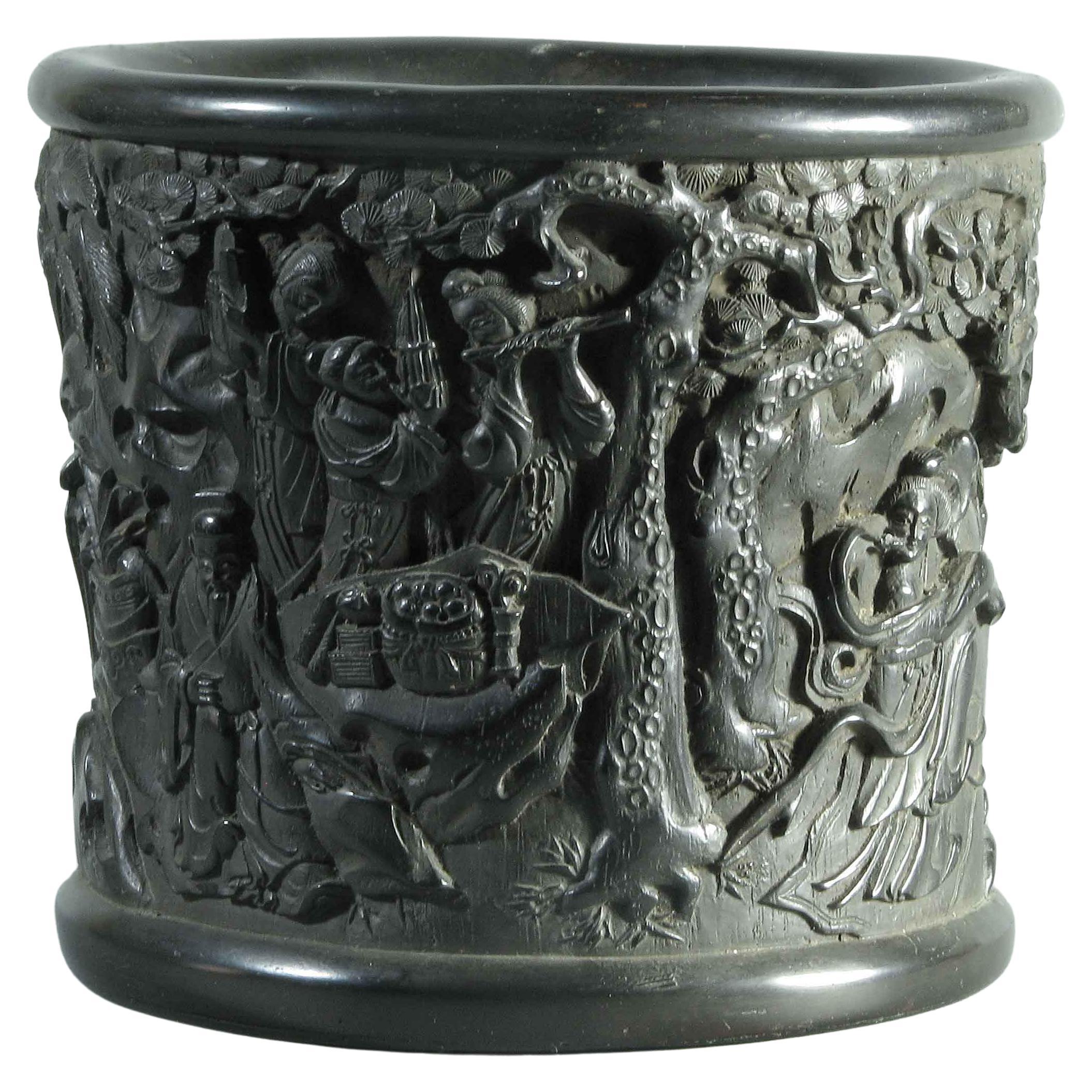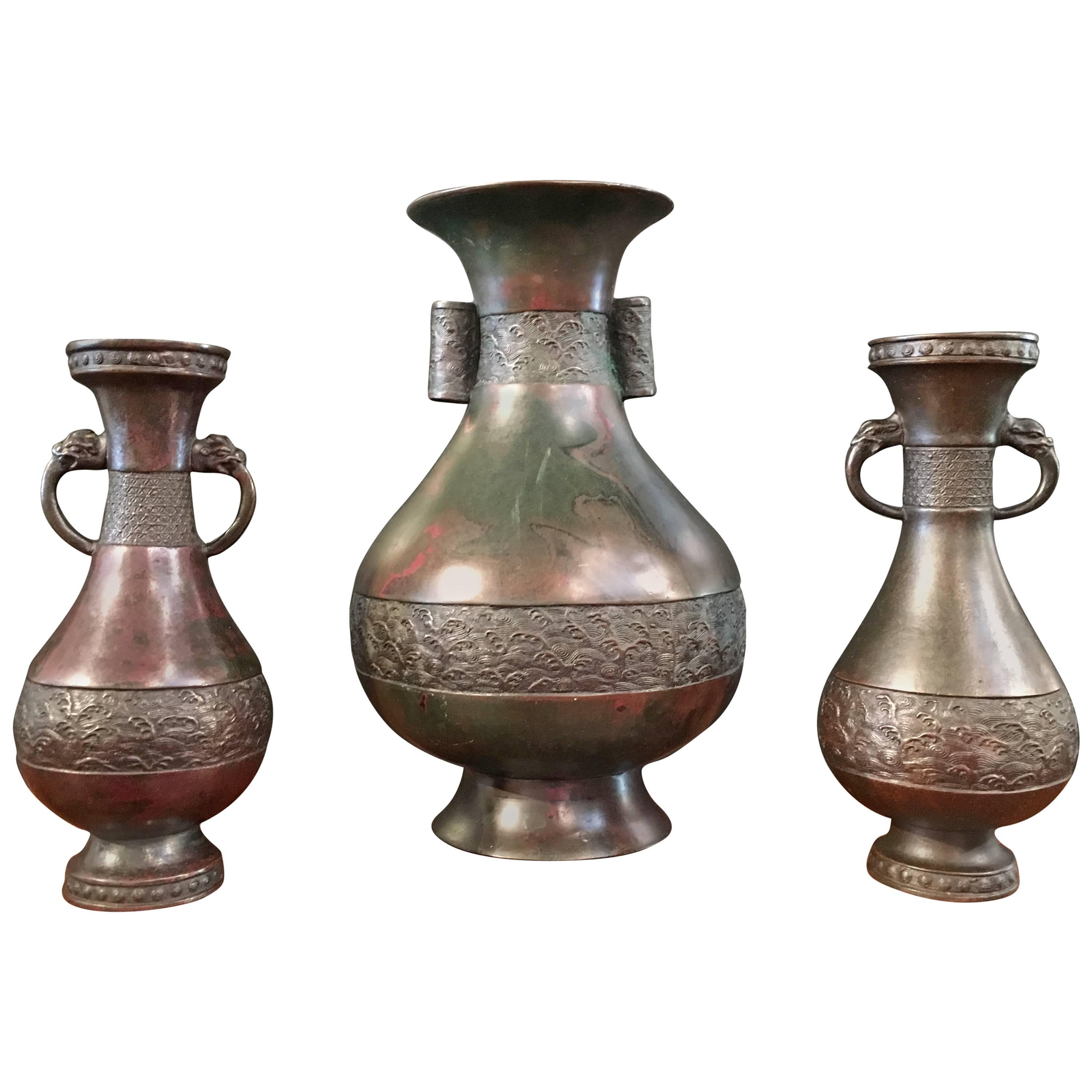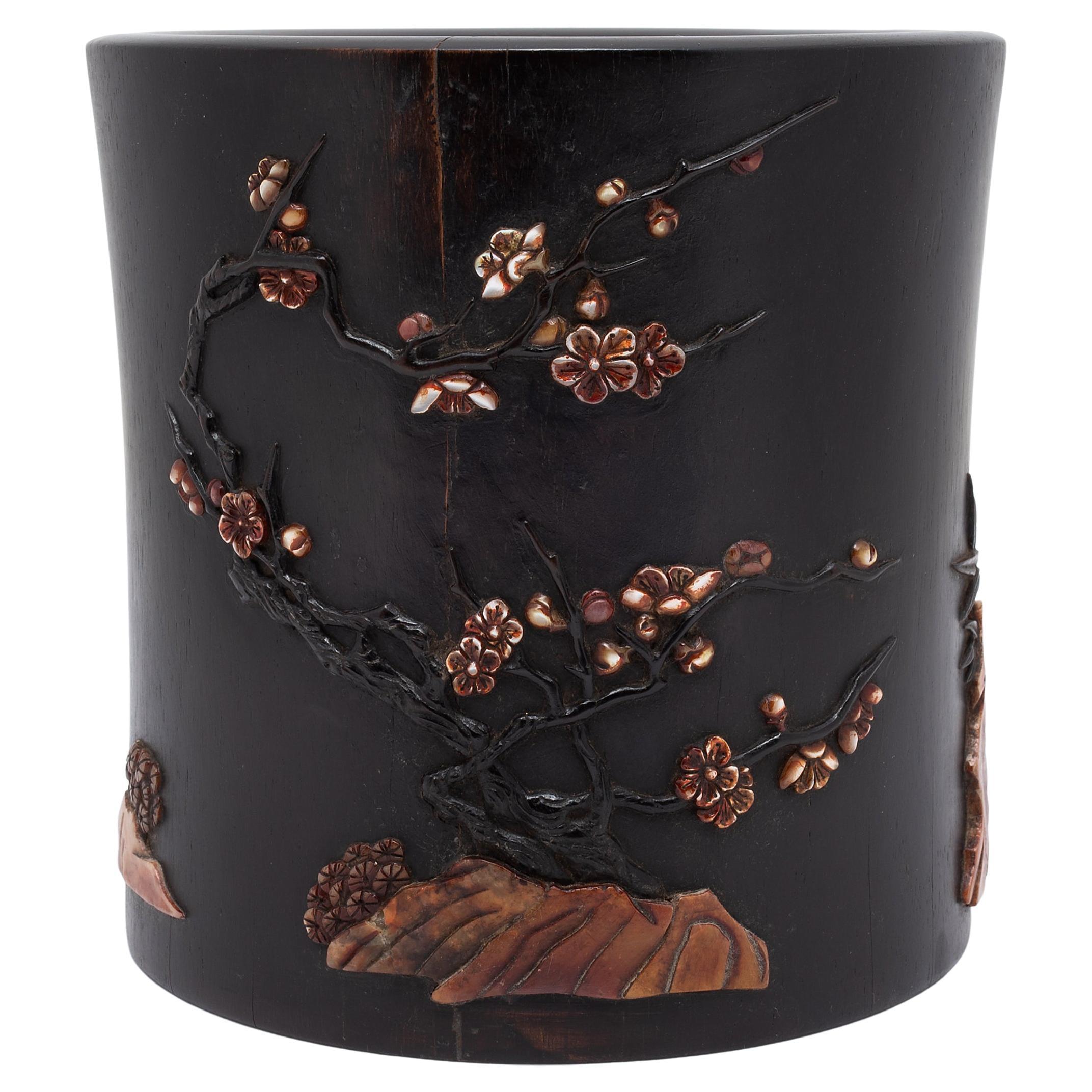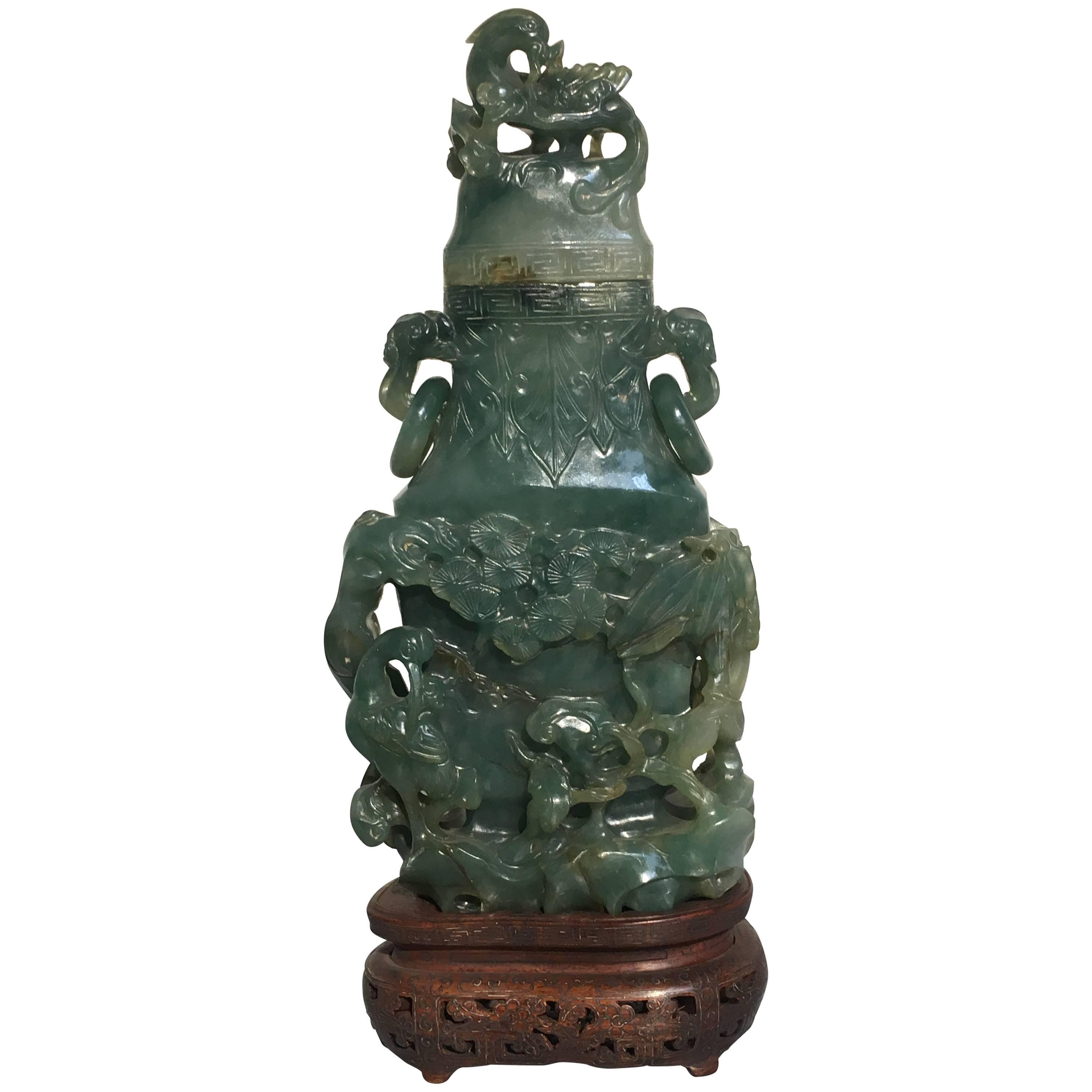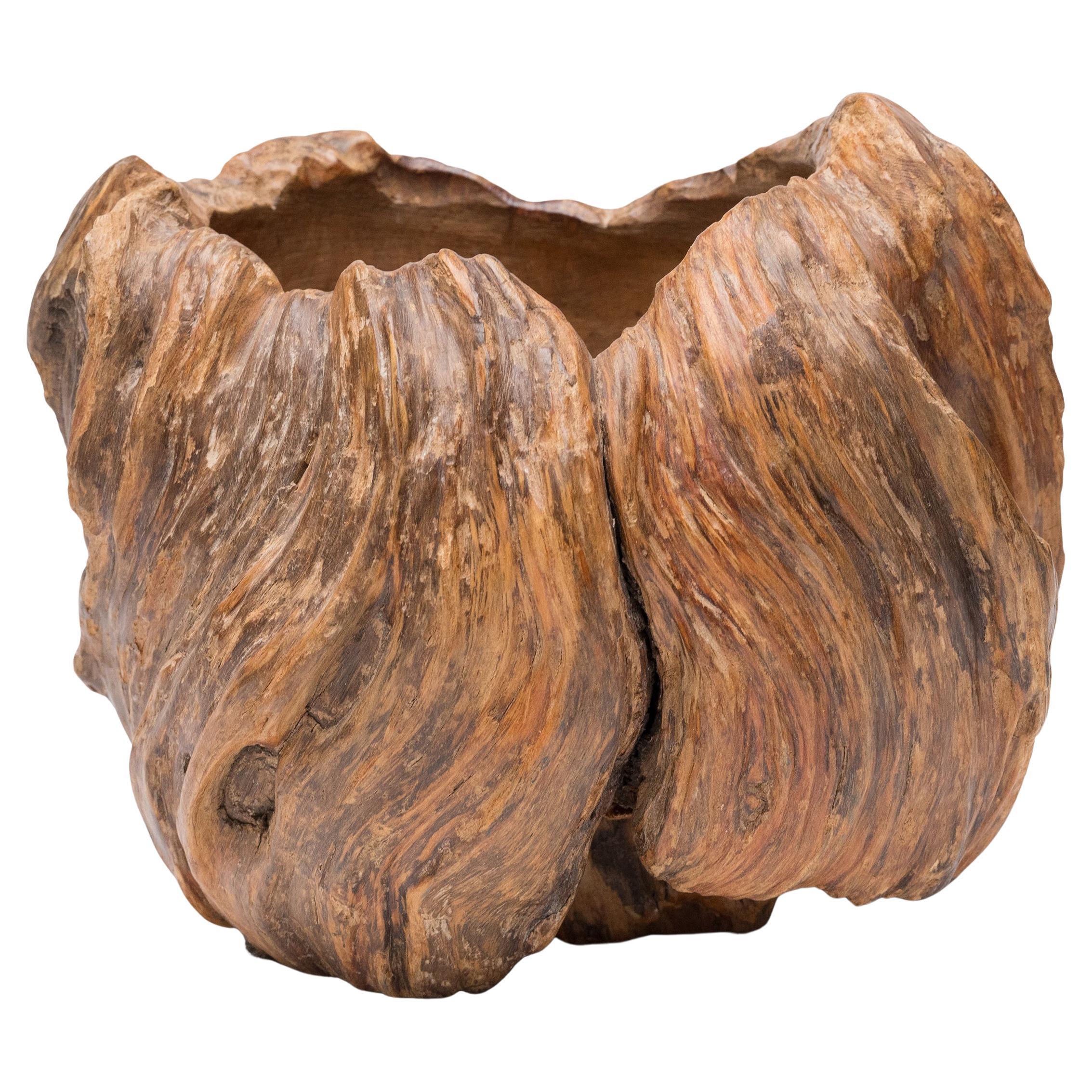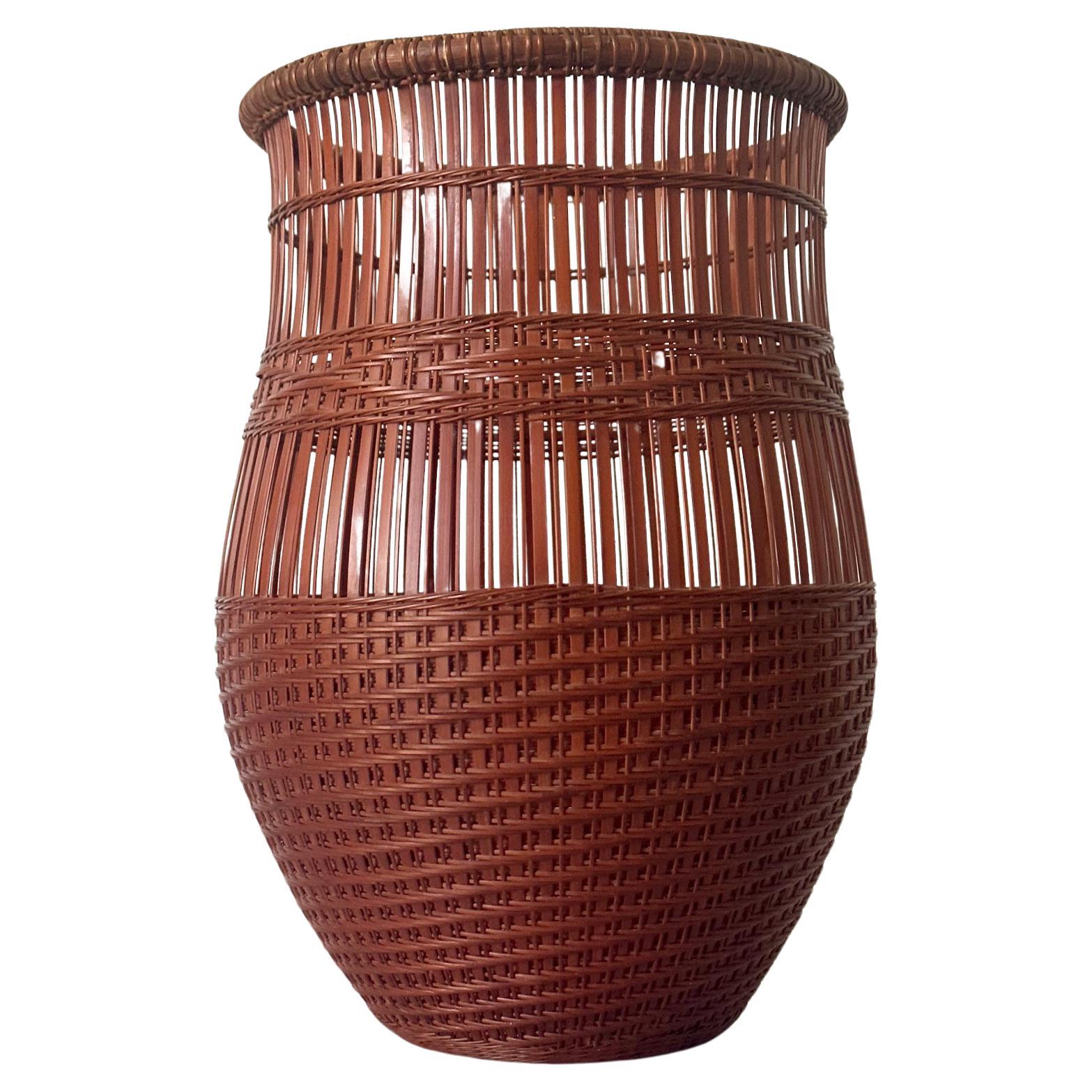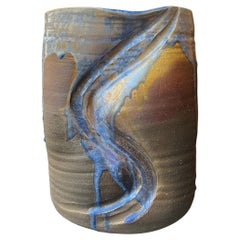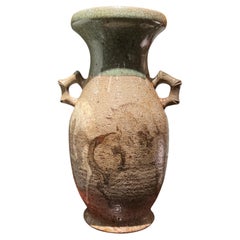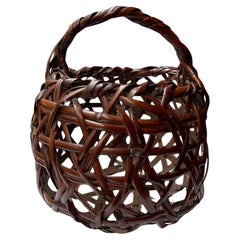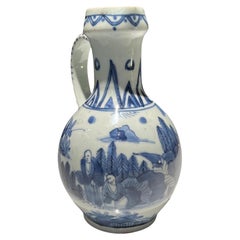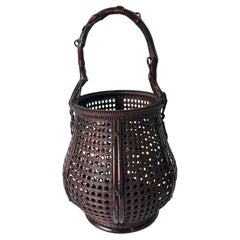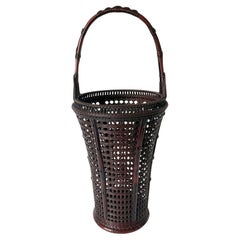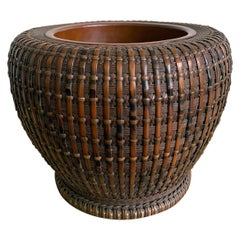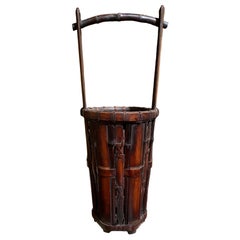
Japan, Hanakago by Maeda Chikubosai i, circa 1930/40
View Similar Items
Video Loading
Want more images or videos?
Request additional images or videos from the seller
1 of 20
Japan, Hanakago by Maeda Chikubosai i, circa 1930/40
About the Item
- Creator:Maeda Chikubosai (Artist)
- Dimensions:Height: 19.69 in (50 cm)Width: 7.29 in (18.5 cm)Depth: 6.7 in (17 cm)
- Materials and Techniques:Bamboo,Hand-Woven
- Place of Origin:
- Period:
- Date of Manufacture:1930-1940
- Condition:Wear consistent with age and use.
- Seller Location:PARIS, FR
- Reference Number:1stDibs: LU6491234050152
About the Seller
5.0
Recognized Seller
These prestigious sellers are industry leaders and represent the highest echelon for item quality and design.
Established in 1982
1stDibs seller since 2022
6 sales on 1stDibs
Authenticity Guarantee
In the unlikely event there’s an issue with an item’s authenticity, contact us within 1 year for a full refund. DetailsMoney-Back Guarantee
If your item is not as described, is damaged in transit, or does not arrive, contact us within 7 days for a full refund. Details24-Hour Cancellation
You have a 24-hour grace period in which to reconsider your purchase, with no questions asked.Vetted Professional Sellers
Our world-class sellers must adhere to strict standards for service and quality, maintaining the integrity of our listings.Price-Match Guarantee
If you find that a seller listed the same item for a lower price elsewhere, we’ll match it.Trusted Global Delivery
Our best-in-class carrier network provides specialized shipping options worldwide, including custom delivery.More From This Seller
View AllJapan, Spectacular Ceramic Vase by Akira Arakawa circa 2000
Located in PARIS, FR
Akira Arakawa, born in 1950 in Hamamatsu and a graduate of Kokushikan University’s Department of Architecture, has carved a unique path in Japanese ceramics. Although trained in architecture, he is a self-taught ceramic artist, renowned for his exceptional mastery of crystallized glazes. This intricate technique demands precise temperature control, reaching extreme levels of 1250°C to 1300°C to melt the glaze components thoroughly. As the temperature slowly decreases, crystals emerge, forming delicate flower or snowflake patterns on the glazed surface. By adding zinc or rutile, Arakawa can manipulate the size and shape of these crystals.
This meticulous process results in captivating works like this deeply carved vase, where blue crystals stand out against earthy backgrounds, creating striking contrasts between crystallized and vitrified areas. Arakawa’s technical excellence has earned him numerous accolades, particularly in Japan’s ceramic competitions and exhibitions.
Arakawa’s work has been featured in prestigious events, including multiple selections for the Nissin Noodle Bowl...
Category
Early 2000s Japanese Modern Vases
Materials
Ceramic
Japanese Ceramic Vase with Horses, Somayaki, Japan circa 1830
Located in PARIS, FR
Japanese Ceramic Vase with Horses, Somayaki, Japan circa 1830
This rare two-handled baluster vase from the late Edo period is a typical example of Ōbori Sōma pottery. Its surface fe...
Category
Antique Early 19th Century Japanese Vases
Materials
Ceramic
Japan, Bamboo basket hanakago by Tanabe Chikuunsai II (1910-2000).
By Tanabe Chikuunsai II 1
Located in PARIS, FR
Japan, Bamboo basket hanakago by Tanabe Chikuunsai II (1910-2000).
Tanabe Chikuunsai II (1910-2000), based in Osaka and Sakai, was the son of Tanabe Chikuunsai I. He was the second...
Category
20th Century Japanese Decorative Baskets
Materials
Bamboo
$3,518 Sale Price
20% Off
Blue white Japanese porcelain ewer, Arita, Japan, circa 1660-1680.
Located in PARIS, FR
Blue white Japnese porcelain ewer, Japan, Arita, circa 1660-1680.
A rare Japanese porcelain ewer with continuous decoration of figures in a woo...
Category
Antique 17th Century Japanese Jars
Materials
Porcelain
Japanese porcelain Arita Vase - Blue peonies - Signed - Japan circa 1970
Located in PARIS, FR
A stunning Japanese porcelain vase, featuring vibrant blue hues and adorned with exquisite peony motifs.
This globular vase boasts meticulous hand-painted detailing, adding to its...
Category
Vintage 1970s Japanese Vases
Materials
Porcelain
$537 Sale Price
20% Off
Chinese Red overlay glass snuff bottle depicting a fish, China, 19th century
Located in PARIS, FR
Red overlay glass snuff bottle depicting a fish, 19th century
A rare translucent glass snuffbox with small bubbles in the shape of a fish, ruby red overlay decor with a fish among th...
Category
Antique Late 19th Century Chinese Scholar's Objects
Materials
Cut Glass
$1,481 Sale Price
20% Off
You May Also Like
Japanese Woven Ikebana Bamboo Basket Maeda Chikubosai I
By Maeda Chikubosai
Located in Atlanta, GA
A woven bamboo ikebana hanakago (flower basket) with handle circa first half of the 20th century (Taisho or Showa era) by Japanese bamboo master Maeda Chikubosai I (1872-1950). In th...
Category
Early 20th Century Japanese Modern Vases
Materials
Bamboo
Japanese Woven Ikebana Bamboo Basket Maeda Chikubosai I
By Maeda Chikubosai
Located in Atlanta, GA
A tall woven bamboo ikebana hanakago (flower basket) circa first half of the 20th century (Taisho or Showa era) by Japanese bamboo master Maeda Chikubosai I (1872-1950). Hand-woven w...
Category
Early 20th Century Japanese Modern Vases
Materials
Bamboo
Large Japanese Bamboo Ikebana Basket Maeda Chikubosai I
By Maeda Chikubosai
Located in Atlanta, GA
An important woven bamboo ikebana basket circa first half of the 20th century (Taisho or Showa era) by Japanese bamboo master Maeda Chikubosai I (1872-1950). Chikubosai I was from th...
Category
Early 20th Century Japanese Japonisme Vases
Materials
Bamboo
Japanese Woven Bamboo Brazier by Maeda Chikubosai I
By Maeda Chikubosai
Located in Atlanta, GA
An important piece of bamboo basketry art by Maeda Chikubosai I (1872-1950), circa 1920s-1930s. The body of the bamboo brazier was made with smoked bamboo (susudake) and rattan and with a built-in copper liner brazier. Mat plaiting, diagonal plaiting and twining were used to construct the robust body while hexagonal plaiting was used for the base. It is signed on the base Chikubosai Kore o tsukuru (Chikubosai made this). The copper brazier...
Category
Vintage 1920s Japanese Japonisme Decorative Baskets
Materials
Copper
Maeda Chikubosai II "Hanakago" Flower Basket
By Maeda Chikubōsai II
Located in Lake Worth Beach, FL
Artist/Designer: Maeda Chikubosai II (Japanese, 1917-2003)
Marking(s); notes: signed
Materials: over-dyed susutake, rattan
Dimensions: 11″h, 5″w, 5″d
Additional Information: Provenan...
Category
20th Century Japanese Decorative Baskets
Materials
Rattan
Large Japanese Woven Bamboo Morikago Basket by Maeda Chikubosai I
By Maeda Chikubosai
Located in Atlanta, GA
A large and impressive Japanese basket in the form of a morikago by Maeda Chikubosai I (1872-1950) circa first half of the 20th century. Chikubosai I was from the Kansai Region and active in Sakai, Osaka prefecture. He was instructed by Wada Waichisai I, (1851-1901).
Morikago is a shallow open basket with handle. It was traditionally used to display fruits, sometimes flowers, during Sencha tea ceremony. In contrast to Chanoyu, Sencha ceremony uses loose green tea leaves instead of tea powder. The placement of loose fruits in the basket meant that the pattern of the bottom, which is often elaborate, was meant to be visible.
This morikago was beautifully constructed with bent bamboo frame and twill plaits for the body. The bottom of the basket features a double diamond pattern achieved with a variation of plover plait. The bifurcated handles was bundle-plated with a rather free spirit approach. They show a poetic suggestion of movement, as if the bamboos were still swaying in the wind. The basket has a copper insert that fits perfectly and it is quite possibly the original. The basket is signed on the base "Chikubosai". The style of the signature shows that it was made by Maeda Chikubosai I.
For another Morikago basket by Maeda Chikubosai I, see page 79 of "Masters of Bamboo" by Rinne.
For the study of the signature of Chikubosai I "Baskets Master Pieces of Japanese Bamboo Art...
Category
Early 20th Century Japanese Japonisme Decorative Baskets
Materials
Copper
Recently Viewed
View AllMore Ways To Browse
Bamboo Imperial
1939 Imperial Furniture
Japanese Woven Bamboo Ikebana
Japanese Bucket
Lingbi Stone
Lingbi Scholar Stones
Antique Chinese Carved Bamboo Brush Pot
Vintage Paint Brush Horse Hair
Antique Chinese Brush Holder
Qing Ink Stone
Jade Scholar Stone
Antique Chinese Snuff Bottles Inside Painted
Jade Archer
Carved Bone Horses
Formation By Art Loom
Taihu Stone
Chinese Jade Seal
Jade Archer Ring
